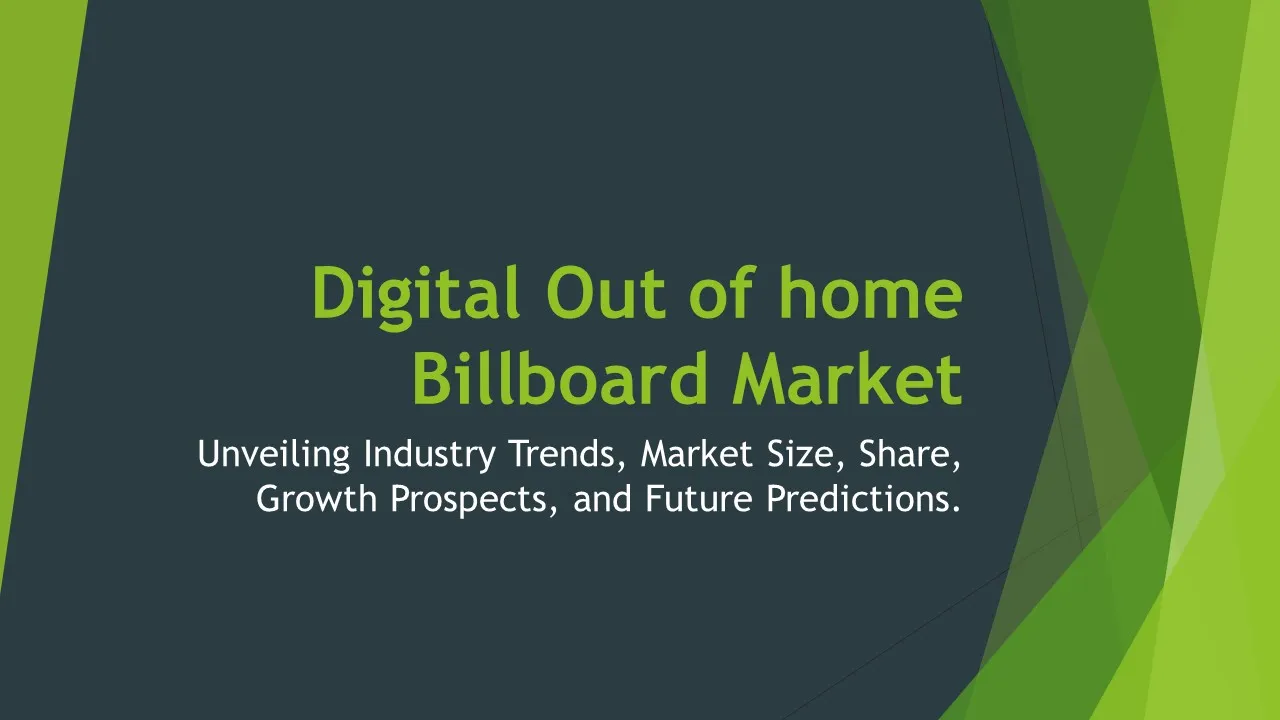Outdoor LED Lighting
Outdoor LED Lighting Market Segments - by Product Type (LED Bulbs, LED Fixtures, LED Lamps, LED Street Lights, LED Flood Lights), Application (Residential, Commercial, Industrial, Architectural, Public Infrastructure), Distribution Channel (Online Retailers, Specialty Stores, Direct Sales, Wholesalers/Distributors, Hypermarkets/Supermarkets), Region (North America, Europe, Asia Pacific, Latin America, Middle East & Africa) - Global Industry Analysis, Growth, Share, Size, Trends, and Forecast
- Report Preview
- Table Of Content
- Segments
- Methodology
Outdoor LED Lighting Market Outlook
The global Outdoor LED Lighting Market is projected to reach approximately USD 16.5 billion by 2033, growing at a compound annual growth rate (CAGR) of around 12.4% from 2025 to 2033. This impressive growth can be attributed to the increasing demand for energy-efficient lighting solutions, coupled with government initiatives aimed at promoting environmentally friendly practices. Additionally, advancements in LED technology are leading to enhanced performance and longer lifespans, making outdoor LED lighting a more appealing option for consumers and businesses alike. The growing trend towards smart cities and the rising awareness of the benefits of LED lighting are expected to further bolster market expansion. Increasing urbanization and the need for enhanced public safety through better illumination are also significant contributors to market growth.
Growth Factor of the Market
The growth of the Outdoor LED Lighting Market is primarily driven by the global shift toward sustainability and energy efficiency. Governments worldwide are implementing stringent regulations to reduce energy consumption and greenhouse gas emissions, which propels the adoption of LED lighting technologies. Moreover, the continuous advancements in LED technology, such as the integration of smart lighting solutions, are enabling more efficient energy management and enhanced control systems. The increasing population in urban areas is also driving demand for better street lighting and public infrastructure, thereby fueling the growth of outdoor LED lighting installations. Additionally, the rising awareness among consumers regarding the cost-effectiveness of LED lighting, which offers significant savings on electricity bills, further contributes to the market's upward trajectory. The development of innovative outdoor lighting solutions tailored for various applications, including smart cities and public safety initiatives, positions the market for sustained growth in the coming years.
Key Highlights of the Market
- The Outdoor LED Lighting Market is expected to grow at a CAGR of 12.4% from 2025 to 2033.
- Energy efficiency and sustainability are key driving factors behind the market growth.
- Technological advancements in LED systems are improving performance and reducing costs.
- The demand for smart city solutions is significantly influencing the adoption of outdoor LED lighting.
- Government initiatives and regulations are promoting the shift towards LED technology globally.
By Product Type
LED Bulbs:
LED bulbs are one of the most popular segments within the Outdoor LED Lighting Market, primarily due to their versatility and energy efficiency. These bulbs are designed to replace traditional incandescent and halogen bulbs, offering significant energy savings and longer lifespans. Enhanced illumination and lower heat emission make LED bulbs ideal for various outdoor applications, ranging from residential patios to commercial spaces such as parking lots and walkways. Furthermore, the growing trend toward smart lighting solutions has led to the development of LED bulbs with integrated connectivity features, allowing users to control brightness and color temperature remotely. Additionally, the affordability of LED bulbs has increased their adoption in both the residential and commercial sectors, driving further growth in this product segment.
LED Fixtures:
LED fixtures are essential components in outdoor lighting systems, specifically designed for various applications such as flood lighting, street lighting, and architectural illumination. These fixtures often come with advanced features like motion sensors, dimming capabilities, and smart control options that enhance energy efficiency and usability. As cities and municipalities increasingly focus on improving public infrastructure, the demand for LED fixtures has surged due to their capability to provide superior light quality and longer operational life compared to traditional lighting options. Furthermore, LED fixtures are designed to withstand harsh weather conditions, making them suitable for diverse installations, from parks and roadways to commercial buildings and public spaces. Their durability, combined with lower maintenance costs, positions LED fixtures as a reliable choice for outdoor lighting solutions.
LED Lamps:
LED lamps are an important segment of the Outdoor LED Lighting Market, providing a more efficient alternative to traditional lighting sources. These lamps are specifically designed for outdoor applications, offering superior energy savings and life expectancy. The adoption of LED lamps is often driven by their versatility; they can be utilized in a variety of settings, from residential gardens to commercial landscapes. The availability of various designs and color temperatures also contributes to their popularity, allowing consumers to choose lamps that suit their aesthetic preferences and lighting needs. Moreover, advancements in LED technology have led to the development of specialized LED lamps that offer features such as motion detection and programmable settings, making them an attractive option for energy-conscious consumers.
LED Street Lights:
LED street lights represent a vital segment of the Outdoor LED Lighting Market, primarily driven by urbanization and the need for modern infrastructure. These lights provide improved visibility and safety for road users while being incredibly energy-efficient compared to traditional street lighting solutions. The integration of smart technologies, such as adaptive lighting and remote monitoring, further enhances the functionality of LED street lights, allowing municipalities to reduce energy consumption and operational costs. Additionally, government initiatives aimed at upgrading urban lighting infrastructure to more sustainable solutions are accelerating the adoption of LED street lights. With growing investments in smart city projects worldwide, the LED street light segment is poised for substantial growth in the coming years.
LED Flood Lights:
LED flood lights are increasingly popular in the Outdoor LED Lighting Market, known for their high-intensity illumination and wide-angle coverage. These lights are ideal for a variety of outdoor applications, including sports facilities, commercial buildings, and public parks. The energy efficiency and long lifespan of LED flood lights make them a cost-effective solution for large-area lighting needs. Furthermore, advancements in LED technology have led to the development of flood lights that offer adjustable brightness and color temperatures, providing flexibility for different settings. The rising demand for enhanced security and visibility in outdoor spaces is driving the adoption of LED flood lights, positioning them as a key player in the outdoor lighting segment.
By Application
Residential:
The residential application segment of the Outdoor LED Lighting Market is experiencing significant growth as homeowners increasingly adopt energy-efficient lighting solutions. Outdoor LED lighting is widely used for various purposes, including garden illumination, pathway lighting, and security lighting. The affordability and availability of LED products make them an attractive option for residential consumers looking to enhance their outdoor spaces. Furthermore, the growing trend of smart home technology is encouraging homeowners to invest in connected outdoor LED lighting systems that allow remote control and monitoring, thereby enhancing convenience and safety. As energy costs rise, more homeowners are turning to outdoor LED lighting to reduce energy consumption and improve the overall aesthetic appeal of their properties.
Commercial:
The commercial application segment represents a significant portion of the Outdoor LED Lighting Market, driven by the increasing demand for energy-efficient lighting solutions in various sectors. Businesses are investing in LED lighting to enhance the safety and visibility of their premises while taking advantage of the long-term cost savings associated with lower energy consumption. Outdoor LED lighting is widely employed in commercial establishments, including shopping centers, office buildings, and parking lots, to improve the overall customer experience. The integration of smart technologies in commercial outdoor lighting solutions, such as scheduling and remote management, further boosts market growth as businesses prioritize operational efficiency and sustainability. As regulations around energy usage become stricter, the trend towards LED lighting in commercial applications is expected to strengthen.
Industrial:
In the industrial application segment, the adoption of outdoor LED lighting is rapidly increasing due to its efficiency and durability. Industrial facilities often require robust and high-performance lighting solutions that can withstand harsh environmental conditions. LED lighting systems are particularly advantageous in these settings, providing bright illumination that enhances safety and productivity. The long lifespan of LED fixtures reduces maintenance costs and downtime, making them ideal for warehouses, manufacturing plants, and other industrial environments. Additionally, as industries aim to reduce their carbon footprint and comply with environmental regulations, the shift towards LED lighting solutions is becoming more pronounced. The industrial sector's commitment to sustainability and operational efficiency is expected to drive continued growth in this segment.
Architectural:
The architectural application segment of the Outdoor LED Lighting Market is gaining momentum as designers and architects increasingly turn to LED solutions for aesthetic and functional lighting. Outdoor LED lighting is used to highlight architectural features, enhance landscapes, and create visually appealing environments in public spaces. The versatility of LED lights allows for various design options, including color-changing capabilities and programmable effects, making them suitable for monuments, museums, and commercial buildings. As cities focus on improving their public spaces through innovative lighting solutions, the demand for architectural outdoor LED lighting is expected to grow. This segment benefits from the rising trend of experiential design, where lighting plays a crucial role in creating ambiance and enhancing the overall user experience.
Public Infrastructure:
The public infrastructure application segment is a pivotal area for the Outdoor LED Lighting Market, spurred by government initiatives aimed at improving urban lighting systems. Municipalities are increasingly replacing traditional lighting with LED solutions in streets, parks, and public squares to enhance safety and security. The energy efficiency of LED lighting significantly reduces operational costs for cities, making it a financially attractive option. Moreover, the integration of smart city technologies is facilitating the implementation of intelligent outdoor lighting systems that can adjust brightness based on traffic or pedestrian activity. As urban centers continue to expand and the need for effective public lighting solutions grows, the public infrastructure segment is poised for substantial growth in the coming years.
By Distribution Channel
Online Retailers:
The online retailers segment has emerged as a leading distribution channel in the Outdoor LED Lighting Market, driven by the increasing consumer preference for online shopping. E-commerce platforms offer a wide variety of LED lighting products, making it convenient for consumers to compare prices and features from the comfort of their homes. The ease of online purchasing, coupled with detailed product descriptions and customer reviews, enhances consumer confidence in buying outdoor lighting solutions online. Additionally, many online retailers provide attractive discounts and bundled offers, making it a cost-effective option for consumers. The growing trend towards digital shopping, accelerated by the COVID-19 pandemic, has solidified online retailers' position in the market, contributing to its significant growth.
Specialty Stores:
Specialty stores continue to play a crucial role in the distribution of outdoor LED lighting products, particularly for consumers seeking expert advice and personalized service. These stores typically focus on lighting solutions and provide a curated selection of LED products, enabling customers to make informed decisions based on their specific needs. The knowledgeable staff in specialty stores can assist consumers in understanding the various features and benefits of different lighting options, which can enhance the overall shopping experience. Additionally, specialty stores often showcase the latest products and technologies, allowing customers to see and experience the lighting solutions in a physical setting before making a purchase. This hands-on approach can drive customer loyalty and repeat business, ensuring the continued relevance of specialty stores in the growing outdoor LED lighting market.
Direct Sales:
Direct sales are an important distribution channel in the Outdoor LED Lighting Market, especially for B2B transactions where companies seek bulk purchases for commercial or industrial projects. Manufacturers often engage in direct sales to establish closer relationships with their customers, providing tailored solutions that meet specific project requirements. This channel allows companies to benefit from volume discounts and customized support services, making it appealing for larger organizations. Additionally, direct sales enable manufacturers to maintain better control over their brand image and customer interactions. As businesses increasingly prioritize energy-efficient lighting solutions, the direct sales channel is expected to grow, facilitating the adoption of outdoor LED lighting in various sectors.
Wholesalers/Distributors:
Wholesalers and distributors play a vital role in the Outdoor LED Lighting Market by bridging the gap between manufacturers and retailers. They provide a comprehensive range of LED lighting products, allowing retailers to access a diverse inventory without the need for large upfront investments. The ability to source products from multiple manufacturers enables wholesalers to offer competitive pricing and faster delivery, which is essential for retailers looking to maintain stock and meet customer demand. Moreover, wholesalers often provide additional services such as marketing support and product training, enhancing the overall value proposition for retailers. As the demand for outdoor LED lighting continues to rise, the role of wholesalers and distributors will be increasingly important in facilitating market growth.
Hypermarkets/Supermarkets:
Hypermarkets and supermarkets represent a significant distribution channel for outdoor LED lighting products, catering to a broad consumer base. These retail giants often include a dedicated section for lighting solutions, making it convenient for shoppers to purchase LED lighting while browsing for other household items. The competitive pricing and promotional offers available in hypermarkets attract price-sensitive consumers looking for energy-efficient lighting options. Moreover, the visibility and accessibility of outdoor LED lighting products in hypermarkets can lead to impulse purchases, contributing to sales growth. As more consumers become aware of the benefits of LED lighting, hypermarkets and supermarkets are likely to expand their offerings in this category, further driving market growth.
By Region
The North American region holds a significant share of the Outdoor LED Lighting Market, driven by the increasing focus on energy efficiency and sustainability. The adoption of LED lighting solutions is largely influenced by government regulations aimed at reducing energy consumption and greenhouse gas emissions. The U.S. Department of Energy has implemented various initiatives to promote energy-efficient technologies, including outdoor LED lighting. Furthermore, as urban areas continue to grow, the demand for effective public lighting solutions is increasing, leading to substantial investments in LED street lighting and public infrastructure. The market in North America is expected to maintain a CAGR of approximately 11% over the forecast period, reflecting strong growth potential.
In Europe, the Outdoor LED Lighting Market is also witnessing robust growth, fueled by stringent regulations and incentives for energy-efficient lighting solutions. European countries are actively investing in smart city initiatives, which often include the implementation of LED lighting systems to enhance safety and reduce energy costs. The demand for aesthetically pleasing architectural outdoor lighting is also on the rise, as cities aim to improve their public spaces and attract tourism. The market in Europe is projected to experience a CAGR of around 13% during the forecast period, indicating a strong commitment to sustainability and innovative lighting solutions. Meanwhile, the Asia Pacific region is emerging as a key player in the market, driven by rapid urbanization and infrastructure development. Countries like China and India are investing heavily in public infrastructure projects, leading to increased demand for outdoor LED lighting solutions.
Opportunities
The Outdoor LED Lighting Market is poised for several opportunities in the coming years, particularly with the global push for smart city developments. As urban areas evolve into technologically advanced ecosystems, the demand for intelligent outdoor lighting solutions that can integrate with other smart city technologies is expected to surge. This encompasses features such as adaptive lighting based on traffic patterns, remote monitoring, and energy management systems that enhance efficiency and safety. Manufacturers and suppliers that can innovate and provide connected lighting solutions will likely capture significant market share in this evolving landscape. Furthermore, the increasing investment in public infrastructure and the need for sustainable lighting solutions create a favorable environment for market participants to expand their offerings and reach new customers.
Another promising opportunity within the Outdoor LED Lighting Market is the expansion into emerging markets. As developing countries continue to urbanize, there is a growing need for efficient and cost-effective lighting solutions in residential, commercial, and public infrastructure settings. By targeting these markets, companies can tap into a vast consumer base that is increasingly seeking reliable lighting options. Additionally, local government initiatives aimed at improving energy efficiency and reducing carbon footprints present a unique opportunity for manufacturers to establish partnerships and collaborations. Through localized strategies, companies can adapt their products to meet the specific needs and preferences of these emerging markets, driving growth and expanding their global presence.
Threats
While the Outdoor LED Lighting Market presents numerous growth opportunities, it also faces potential threats that could impact its trajectory. One significant threat is the rapid pace of technological advancements, which can lead to increased competition among manufacturers. As new players enter the market with innovative products, established companies may find it challenging to maintain their market share unless they continuously adapt and improve their offerings. Additionally, the reliance on specific raw materials for LED production, such as gallium and indium, poses a risk if supply chain disruptions occur or if prices become volatile. Such factors can impact production costs and subsequently affect pricing strategies, hindering profitability. Furthermore, the presence of cheaper, low-quality LED alternatives can undermine consumer trust and perception, creating challenges for reputable manufacturers.
Another significant concern for the Outdoor LED Lighting Market is the potential for regulatory changes. As governments implement stricter environmental regulations, manufacturers may face increased compliance costs and operational challenges. The market could also experience fluctuations in demand based on changing regulations or incentives for energy-efficient products. Moreover, economic uncertainties, such as recessions or geopolitical tensions, can negatively impact consumer spending on outdoor lighting solutions, further complicating the market landscape. It is essential for industry players to remain vigilant and adapt to these potential threats to sustain growth and maintain competitive advantages.
Competitor Outlook
- Signify (formerly Philips Lighting)
- Osram Licht AG
- Cree, Inc.
- GE Lighting
- Acuity Brands, Inc.
- Zumtobel Group AG
- Legrand
- Focal Point LLC
- LEDvance
- Havells India Ltd.
- Westinghouse Lighting Corporation
- Schneider Electric
- LSI Industries Inc.
- Satco Products, Inc.
- American Electric Lighting (a division of Acuity Brands)
The competitive landscape of the Outdoor LED Lighting Market is characterized by a diverse array of players, ranging from established multinational corporations to innovative startups. Major companies such as Signify, Osram Licht AG, and Cree, Inc. dominate the market, leveraging their extensive experience, brand recognition, and technological advancements to maintain a competitive edge. Signify, for example, is well-known for its extensive product portfolio, including smart lighting solutions that cater to the growing demand for connected technologies. Their commitment to sustainability and energy efficiency resonates well with environmentally-conscious consumers, further solidifying their market position. In addition, Osram Licht AG focuses on developing cutting-edge LED solutions that cater to various applications, ensuring they remain at the forefront of innovation within the industry.
Acuity Brands, Inc. has carved out a significant niche in the outdoor LED lighting segment, particularly in providing solutions for commercial and industrial applications. Their emphasis on customizable lighting systems, combined with advanced controls and smart technologies, positions them as a preferred choice for businesses looking to enhance their energy efficiency and operational capabilities. Additionally, companies like GE Lighting and the Zumtobel Group AG are also heavily investing in research and development to bring new products to market, ensuring that they stay competitive in an ever-evolving landscape. As these major players continue to innovate and expand their product offerings, smaller companies and startups must differentiate themselves by focusing on niche markets or specialized applications to gain a foothold in the market.
Furthermore, the Outdoor LED Lighting Market is marked by collaborations and partnerships as companies seek to leverage each other's strengths and expand their reach. For instance, manufacturers are teaming up with technology firms to integrate smart features into their lighting solutions, enhancing overall functionality and appeal. This collaborative approach allows companies to tap into new markets and accelerate product development. As sustainability becomes a priority for consumers and governments alike, companies that prioritize eco-friendly practices and invest in energy-efficient technologies are likely to emerge as leaders in the market. The competition will continue to intensify as new entrants bring fresh perspectives and innovation, making it essential for established players to adapt and evolve to maintain their market positions.
1 Appendix
- 1.1 List of Tables
- 1.2 List of Figures
2 Introduction
- 2.1 Market Definition
- 2.2 Scope of the Report
- 2.3 Study Assumptions
- 2.4 Base Currency & Forecast Periods
3 Market Dynamics
- 3.1 Market Growth Factors
- 3.2 Economic & Global Events
- 3.3 Innovation Trends
- 3.4 Supply Chain Analysis
4 Consumer Behavior
- 4.1 Market Trends
- 4.2 Pricing Analysis
- 4.3 Buyer Insights
5 Key Player Profiles
- 5.1 Legrand
- 5.1.1 Business Overview
- 5.1.2 Products & Services
- 5.1.3 Financials
- 5.1.4 Recent Developments
- 5.1.5 SWOT Analysis
- 5.2 LEDvance
- 5.2.1 Business Overview
- 5.2.2 Products & Services
- 5.2.3 Financials
- 5.2.4 Recent Developments
- 5.2.5 SWOT Analysis
- 5.3 Cree, Inc.
- 5.3.1 Business Overview
- 5.3.2 Products & Services
- 5.3.3 Financials
- 5.3.4 Recent Developments
- 5.3.5 SWOT Analysis
- 5.4 GE Lighting
- 5.4.1 Business Overview
- 5.4.2 Products & Services
- 5.4.3 Financials
- 5.4.4 Recent Developments
- 5.4.5 SWOT Analysis
- 5.5 Osram Licht AG
- 5.5.1 Business Overview
- 5.5.2 Products & Services
- 5.5.3 Financials
- 5.5.4 Recent Developments
- 5.5.5 SWOT Analysis
- 5.6 Focal Point LLC
- 5.6.1 Business Overview
- 5.6.2 Products & Services
- 5.6.3 Financials
- 5.6.4 Recent Developments
- 5.6.5 SWOT Analysis
- 5.7 Zumtobel Group AG
- 5.7.1 Business Overview
- 5.7.2 Products & Services
- 5.7.3 Financials
- 5.7.4 Recent Developments
- 5.7.5 SWOT Analysis
- 5.8 Havells India Ltd.
- 5.8.1 Business Overview
- 5.8.2 Products & Services
- 5.8.3 Financials
- 5.8.4 Recent Developments
- 5.8.5 SWOT Analysis
- 5.9 Schneider Electric
- 5.9.1 Business Overview
- 5.9.2 Products & Services
- 5.9.3 Financials
- 5.9.4 Recent Developments
- 5.9.5 SWOT Analysis
- 5.10 Acuity Brands, Inc.
- 5.10.1 Business Overview
- 5.10.2 Products & Services
- 5.10.3 Financials
- 5.10.4 Recent Developments
- 5.10.5 SWOT Analysis
- 5.11 LSI Industries Inc.
- 5.11.1 Business Overview
- 5.11.2 Products & Services
- 5.11.3 Financials
- 5.11.4 Recent Developments
- 5.11.5 SWOT Analysis
- 5.12 Satco Products, Inc.
- 5.12.1 Business Overview
- 5.12.2 Products & Services
- 5.12.3 Financials
- 5.12.4 Recent Developments
- 5.12.5 SWOT Analysis
- 5.13 Westinghouse Lighting Corporation
- 5.13.1 Business Overview
- 5.13.2 Products & Services
- 5.13.3 Financials
- 5.13.4 Recent Developments
- 5.13.5 SWOT Analysis
- 5.14 Signify (formerly Philips Lighting)
- 5.14.1 Business Overview
- 5.14.2 Products & Services
- 5.14.3 Financials
- 5.14.4 Recent Developments
- 5.14.5 SWOT Analysis
- 5.15 American Electric Lighting (a division of Acuity Brands)
- 5.15.1 Business Overview
- 5.15.2 Products & Services
- 5.15.3 Financials
- 5.15.4 Recent Developments
- 5.15.5 SWOT Analysis
- 5.1 Legrand
6 Market Segmentation
- 6.1 Outdoor LED Lighting Market, By Application
- 6.1.1 Residential
- 6.1.2 Commercial
- 6.1.3 Industrial
- 6.1.4 Architectural
- 6.1.5 Public Infrastructure
- 6.2 Outdoor LED Lighting Market, By Distribution Channel
- 6.2.1 Online Retailers
- 6.2.2 Specialty Stores
- 6.2.3 Direct Sales
- 6.2.4 Wholesalers/Distributors
- 6.2.5 Hypermarkets/Supermarkets
- 6.1 Outdoor LED Lighting Market, By Application
7 Competitive Analysis
- 7.1 Key Player Comparison
- 7.2 Market Share Analysis
- 7.3 Investment Trends
- 7.4 SWOT Analysis
8 Research Methodology
- 8.1 Analysis Design
- 8.2 Research Phases
- 8.3 Study Timeline
9 Future Market Outlook
- 9.1 Growth Forecast
- 9.2 Market Evolution
10 Geographical Overview
- 10.1 Europe - Market Analysis
- 10.1.1 By Country
- 10.1.1.1 UK
- 10.1.1.2 France
- 10.1.1.3 Germany
- 10.1.1.4 Spain
- 10.1.1.5 Italy
- 10.1.1 By Country
- 10.2 Asia Pacific - Market Analysis
- 10.2.1 By Country
- 10.2.1.1 India
- 10.2.1.2 China
- 10.2.1.3 Japan
- 10.2.1.4 South Korea
- 10.2.1 By Country
- 10.3 Latin America - Market Analysis
- 10.3.1 By Country
- 10.3.1.1 Brazil
- 10.3.1.2 Argentina
- 10.3.1.3 Mexico
- 10.3.1 By Country
- 10.4 North America - Market Analysis
- 10.4.1 By Country
- 10.4.1.1 USA
- 10.4.1.2 Canada
- 10.4.1 By Country
- 10.5 Outdoor LED Lighting Market by Region
- 10.6 Middle East & Africa - Market Analysis
- 10.6.1 By Country
- 10.6.1.1 Middle East
- 10.6.1.2 Africa
- 10.6.1 By Country
- 10.1 Europe - Market Analysis
11 Global Economic Factors
- 11.1 Inflation Impact
- 11.2 Trade Policies
12 Technology & Innovation
- 12.1 Emerging Technologies
- 12.2 AI & Digital Trends
- 12.3 Patent Research
13 Investment & Market Growth
- 13.1 Funding Trends
- 13.2 Future Market Projections
14 Market Overview & Key Insights
- 14.1 Executive Summary
- 14.2 Key Trends
- 14.3 Market Challenges
- 14.4 Regulatory Landscape
Segments Analyzed in the Report
The global Outdoor LED Lighting market is categorized based on
By Application
- Residential
- Commercial
- Industrial
- Architectural
- Public Infrastructure
By Distribution Channel
- Online Retailers
- Specialty Stores
- Direct Sales
- Wholesalers/Distributors
- Hypermarkets/Supermarkets
By Region
- North America
- Europe
- Asia Pacific
- Latin America
- Middle East & Africa
Key Players
- Signify (formerly Philips Lighting)
- Osram Licht AG
- Cree, Inc.
- GE Lighting
- Acuity Brands, Inc.
- Zumtobel Group AG
- Legrand
- Focal Point LLC
- LEDvance
- Havells India Ltd.
- Westinghouse Lighting Corporation
- Schneider Electric
- LSI Industries Inc.
- Satco Products, Inc.
- American Electric Lighting (a division of Acuity Brands)
- Publish Date : Jan 21 ,2025
- Report ID : EL-33569
- No. Of Pages : 100
- Format : |
- Ratings : 4.5 (110 Reviews)
Related reports









